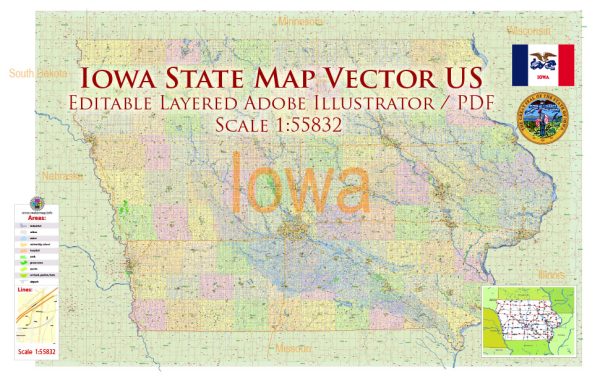Iowa, like many states in the United States, has experienced significant changes in its urban landscape over the years. The state’s urban development can be traced back to the 19th century when European settlers began to establish towns and cities. Here are some key points in the history of urban development in Iowa State:
- Early Settlements (19th Century): The initial phase of urban development in Iowa involved the establishment of small settlements along rivers and transportation routes. Cities such as Des Moines, Cedar Rapids, and Davenport began to emerge as trading and transportation hubs.
- Railroad Expansion: The mid-19th century saw the expansion of railroads, which played a crucial role in connecting different parts of the state and facilitating the transportation of goods and people. This led to the growth of existing cities and the creation of new urban centers.
- Industrialization: The late 19th and early 20th centuries marked a period of industrialization in Iowa. Cities like Des Moines became industrial and commercial centers, attracting businesses and workers. The economy diversified beyond agriculture, contributing to urban growth.
- Post-War Period: After World War II, there was a nationwide trend of suburbanization, and Iowa was no exception. The development of highways and increased automobile use facilitated the movement of people to suburban areas. This had implications for the growth and development of both urban and suburban areas in the state.
- Urban Renewal and Redevelopment: In the mid-20th century, many cities embarked on urban renewal projects, aiming to modernize infrastructure and address issues like blight. While these efforts brought about positive changes in some areas, they also faced criticism for displacing communities.
- Contemporary Developments: In recent decades, Iowa has seen a focus on sustainable urban development, with efforts to revitalize downtown areas, promote green spaces, and enhance the overall quality of life. Cities have also embraced technology and innovation to foster economic growth.
- Cultural and Educational Centers: Cities like Iowa City, home to the University of Iowa, have developed as cultural and educational hubs. The presence of universities has had a significant impact on the character and growth of these urban centers.
It’s important to note that the specifics of urban development can vary widely among different cities in Iowa, each with its unique history and challenges. For the most up-to-date information, you may want to consult local historical records, city planning documents, or recent publications on Iowa’s urban development.


 Author: Kirill Shrayber, Ph.D.
Author: Kirill Shrayber, Ph.D.